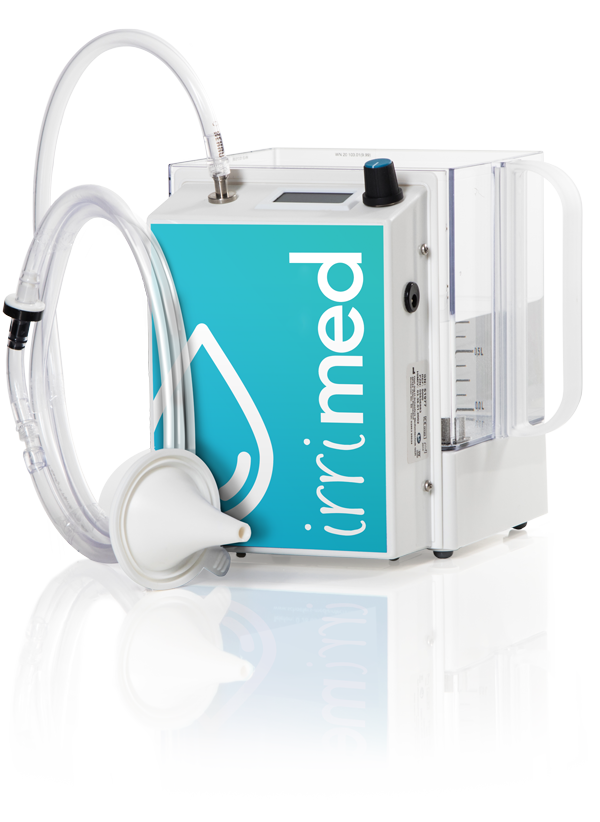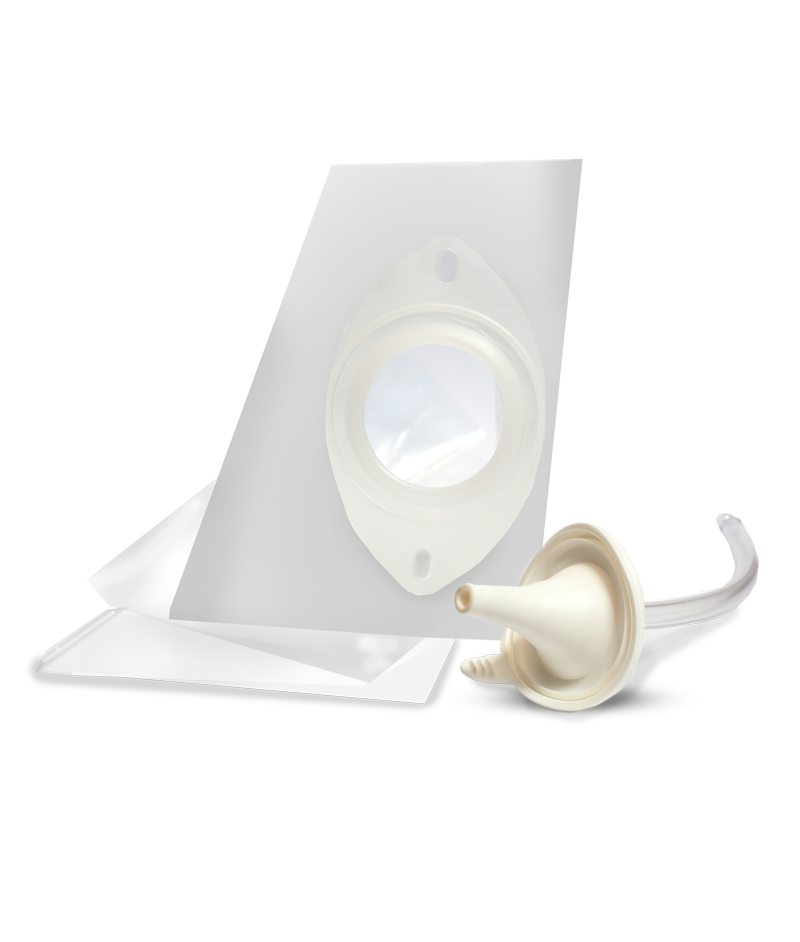independent
A comfortable and mobile use is guaranteed by the battery operating unit and grants you more freedom.
Irrimed has been developed from affected people for affected people and is designed to best suit your needs; An uncomplicated, clean and comfortable irrigation for long-lasting safety between flushes.
A comfortable and mobile use is guaranteed by the battery operating unit and grants you more freedom.
You simply adapt Irrimed to your needs by manually setting the rinsing pressure and water quantity on the unit.

Easy and intuitive handling helps you to quickly establish a routine and perform the irrigation properly, without problems.
FILL IN
Heat water to the desired temperature and fill into the container
SWITCH ON
and let the water run into the intestine with individual flushing pressure
RINSE
wait while the water stimulates bowel activity
DRAIN
in combination with Combifix particularly hygienic and without skin contact
SAFE
Enjoy up to 48 hours of newfound, stool-free time
Try it yourself. With pleasure we will provide you with a free test device.
Regular irrigation eliminates the need for bag supply and thus many problems:
Therefore irrigation can provides a more secure and pleasant feeling than permanent bag supply and is more sustainable as well!


We try to make irrigation as comfortable and hygienic as possible for you. With Irrimed you do not need a suspension device, the irrigation is quite, mobile and you can adjust the flushing pressure to suit your individual needs. Combifix works perfectly together with the irrigation cone - incorrect operation is therefore impossible. Due to the closed design, no splashes get outside and you do not touch any excreta. The bags are so generously dimensioned that you can also irrigate standing up.
The following questions were answered by a stoma user who has been irrigating with irrimed for more than 30 years. Please consider the answers only as a recommendation or guideline, as everyone feels differently about irrigation.
The best place to learn irrigation is in a clinic or rehabilitation centre. Experienced stoma therapists will be happy to show you how to irrigate there. Specialised personnel in specialised shops can also help you with this.
Many users demand unnecessary precision for water quantity and temperature. Specialised literature does not give exact values neither for water quantity nor water temperature. I personally use about 2 litres for irrigation, pre-rinsing with one litre and then using the remaining litre for the main rinse. The longer you irrigate, the better you can decide which water temperature and amount of water promises the greatest success. Just try it out!
In the literature, temperatures between 31ºC and 41ºC are recommended. They often talk about intestinal cramps at temperatures below 30ºC. However, I have not noticed any cramps even at 22ºC. Below 30ºC, emptying is merely less spontaneous and good.
The complete water intake time should be in the range of 3 to 10 minutes. If the run-in time is longer, too much water is absorbed by the intestine. This results in a lower readiness for emptying. The electric irrigation pump makes it very easy to control the run-in times.
It is best to flush in accordance with natural emptying habits. The greatest readiness for emptying occurs in the morning hours, about half an hour after breakfast or after getting up.
The aim of irrigation is to remain stool-free as long as possible. That's why it doesn't make sense to irrigate every day. A stoma therapist gave me the tip to wait with the next irrigation until the bowel takes up its activity itself.
I tried this while staying near my house. I achieved stool-free periods of 3 to 4 days during this time. Unfortunately, this is not possible for everyone, but 2 days of stool-free time should be achievable with patience and practice.
If you observe your body, you will notice an increased gas build-ip after sometime. This is often a natural sign for irrigation. If, for example, I experience a gas build-up in the course of the afternoon without having eaten highly flatulent food, this is an indication that I will have to irrigate the next morning.
Irrigation is not "obligatory", it can be stopped at any time without hesitation and replaced with bag supply.
Many users often demand unnecessary precision for the water quantity and temperature. Specialised literature names no exact values for either the water quantity or temperature. I only found varying guidelines.
I personally use about 2 litres of water for my irrigation, pre-rinsing with one litre and then using the rest for the main rinse. The optimal water temperature is about 37° C. Here, the Irrigator Irrimed provides valuable services, as it has an integrated temperature display.
With more experience in irrigation its gets easier to know the right amount of water and the best water temperature for the best results.
During my tests, I also noticed that at water temperatures below 30°C, emptying is not as spontaneous and good. I did not notice any intestinal cramps, as often described, even at a water temperature of 22° C.
According to my observations, any cramps or intestinal twinges have a different cause.
In my experience, pinching or slight cramps in the abdominal area that sometimes occur during irrigation are not due to water that is too cold, to air bubbles in the water or to the water running in too quickly. The reason for this pinching is that the intestine works very hard and tries to push the water out together with some stool. If you stop the water supply, this pinching will immediately stop. You can also take the cone out of the stoma and let water and stool escape from the intestine for a short time. Then continue the irrigation again.
Irrigation costs about 30% less than bag supply. I have also included the one-off costs of the irrimed here. In addition, it is also significantly more eco-friendly and sustainable.